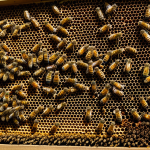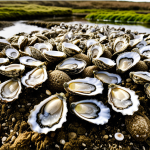Overview of British Amphibians
British wildlife boasts a fascinating diversity of amphibian species that play crucial roles in ecosystems. Common species in Britain include the smooth newt, common frog, and the rare natterjack toad. These creatures are integral to biodiversity conservation thanks to their varied ecological functions.
Amphibians contribute significantly to ecosystems by acting as predators and prey, regulating insect populations, and providing food for other animals. This balance maintains healthy habitats and supports ecological stability. Their presence indicates environmental health, and any significant decline in numbers could suggest broader ecological issues.
Have you seen this : Restoring oyster habitats: innovative approaches to boost recovery in uk coastal areas
Their ecological importance extends to soil fertility as they aid in nutrient cycling. Through interactions like these, amphibian species support the dynamic balance within their ecosystems, underscoring their necessity in British wildlife. As such, conserving these species is imperative not only for their survival but for the broader health of natural habitats.
Migration Patterns of British Amphibians
Understanding the migration behavior of British amphibians is crucial for their conservation. Amphibians such as frogs, toads, and newts exhibit notable amphibian movement patterns, especially during seasonal migration periods. These migrations are primarily driven by the need to breed, with most amphibians moving towards aquatic environments in spring and returning to terrestrial habitats afterwards.
Also read : Enhancing wild animal protection: discover how new uk hunting regulations shield foxes and hares
Key migration periods include spring and early summer, when breeding activities peak. During these times, amphibians travel to traditional breeding sites, often ponds and other water bodies, to lay their eggs. This migration is often synchronized with specific weather conditions, like rain and milder temperatures, which facilitate their movement.
Several factors influence amphibian migration routes, such as environmental cues like temperature and moisture, as well as biological factors like age and reproductive status. Human-induced changes in landscapes, such as roads and urban developments, can disrupt these natural routes, posing significant challenges to amphibian populations.
Habitat connectivity is paramount during migration to ensure amphibians can access necessary breeding sites without impediment. Creating wildlife corridors and reducing barriers in urbanized regions can significantly help in maintaining these essential pathways. Conservation efforts must prioritize ensuring habitat connectivity to support healthy migratory behaviors, which are vital for the survival of these species within British wildlife.
Challenges Facing Amphibians in Britain
In the beautiful yet challenging environment of British wildlife, amphibians face numerous conservation challenges that threaten their existence. These threats are primarily related to pollution, climate change, and urbanization, all of which wreak havoc on their natural habitats.
Habitat loss poses a significant danger to amphibian species by destroying their breeding and migration sites. As forests are cleared and wetlands drained, these crucial environments vanish, significantly affecting amphibian migration and survival chances. Without adequate habitats, amphibians struggle to find suitable breeding grounds, leading to a decline in their population.
Moreover, native amphibians also face predators and invasive species. In some regions, non-native species compete for resources and introduce new diseases, adding pressure to the already dwindling amphibian numbers. Understanding these multifaceted threats is vital to address them effectively.
To support their survival, comprehensive conservation efforts are crucial. Balancing urban expansion with habitat preservation and implementing strategies to mitigate climate change can help protect these indispensable creatures. Recognizing and reducing these threats ensures the sustainability of amphibians in Britain’s ecosystems.
Strategies for Supporting Amphibian Conservation
The conservation of amphibians in Britain necessitates innovative and collective strategies. As these species face increasing threats, community involvement and individual actions play a pivotal role in their preservation efforts.
Individual Actions for Conservation
Individuals can contribute significantly to amphibian conservation initiatives through simple yet impactful steps:
- Create amphibian-friendly gardens: Incorporate native plants, water features, and leave parts of your garden natural to attract and sustain amphibians.
- Report amphibian sightings: Participating in citizen science projects helps scientists gather valuable data on distribution and population trends, aiding in conservation efforts.
Community Initiatives and Education
Communities hold the potential to orchestrate meaningful conservation strategies by uniting for amphibian protection:
- Educational programs: Schools and local organizations can conduct workshops focused on amphibians, enlightening the public about these species’ ecological importance.
- Case studies: Examine successful community-led projects as models for effective conservation approaches.
Volunteering and Getting Involved
Volunteering presents enriching opportunities for engagement and learning in amphibian protection:
- Work with local conservation groups: Collaborate on habitat restoration projects and participate in amphibian monitoring efforts.
- Networking: Connect with organizations dedicated to protecting amphibians, potentially discovering internships or workshops in the field.
By embracing these strategies, both individuals and communities can actively contribute to sustaining amphibian populations, ensuring their continued role in maintaining ecological balance.
Resources for Further Learning
For those interested in amphibian conservation, a plethora of resources exists to support self-education and active involvement. Understanding these creatures’ vital roles in British wildlife enriches our capacity to aid their preservation.
Recommended Books and Articles
Explore a variety of literature that deepens understanding of amphibian species and their ecological importance. Books like “British Amphibians and Reptiles” offer comprehensive insights into species behavior and habitats. Scholarly articles further illuminate the role of amphibians in biodiversity conservation and the current challenges they face.
Online Platforms and Organizations
Numerous online platforms and organizations provide excellent educational materials and active engagement opportunities. Websites like the Amphibian and Reptile Conservation (ARC) Trust give access to detailed information on conservation strategies, while the FrogLife website offers resources for community involvement and events focused on amphibian protection.
Tools and Technology
Modern tools and technology are invaluable in tracking and studying amphibians, offering data that supports conservation strategies. Apps enabling citizen scientists to report sightings help map distributions and monitor population changes effectively. Moreover, GPS technology can be used in research to study migration patterns, giving crucial insights into these species’ seasonal movements.








